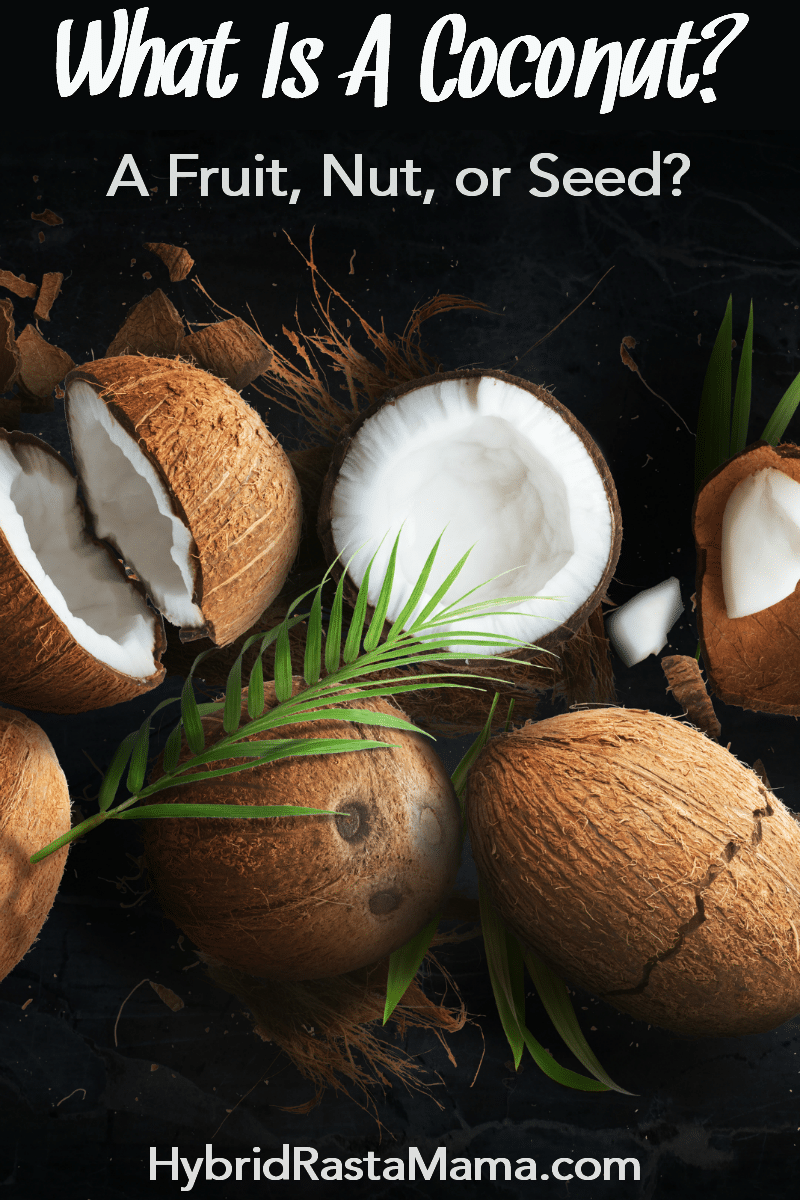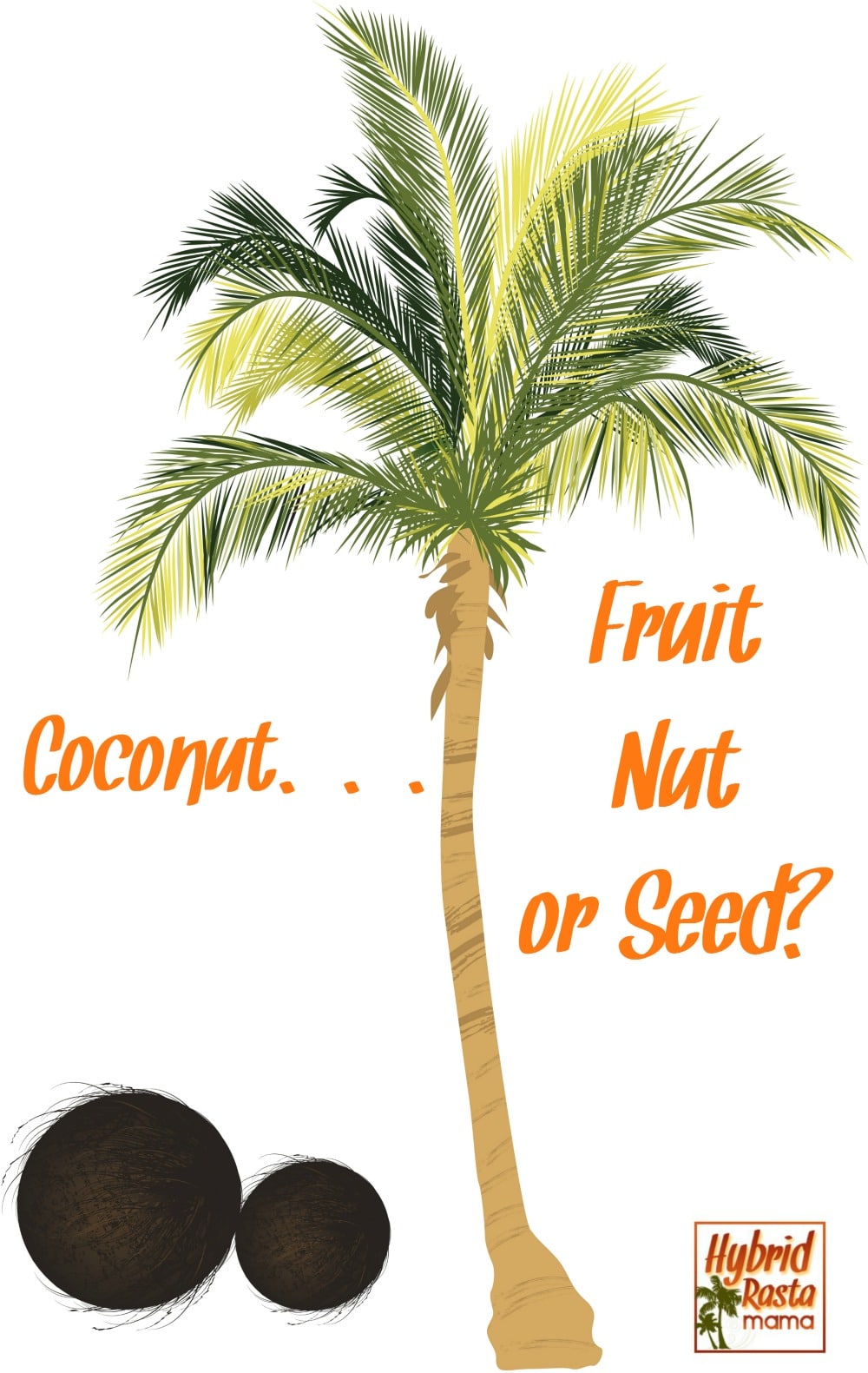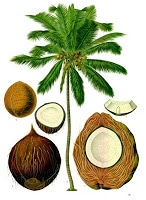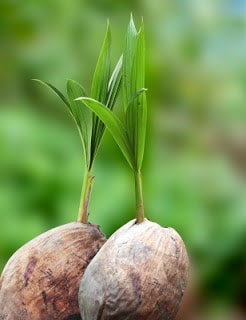It’s a fruit! It’s a nut! It’s a seed! It’s a Coconut?
Recently, I have received a lot of emails from readers who are interested in adding coconut oil to their diets but are allergic to tree nuts. They are curious to learn if coconuts are an allergen for those allergic to tree nuts.
Botanically speaking, a coconut is a fibrous one-seeded drupe, also known as a dry drupe. A drupe is a fruit with a hard stony covering enclosing the seed (like a peach or olive) and comes from the word drupa meaning overripe olive. A coconut, and all drupes, have three layers: the exocarp (outer layer), the mesocarp (fleshy middle layer), and the endocarp (hard, woody layer that surrounds the seed).
If you were to look up into a coconut palm tree, you would see a true, raw coconut. The outermost layer is typically smooth with a greenish color. The middle layer is the fibrous husk which surrounds the hard woody layer (endocarp). The endocarp surrounds the seed. Generally speaking, when you buy a coconut at the supermarket what you see is the endocarp. So clearly, a coconut is a fruit, more specifically a drupe.
The word coconut is confusing because the word “nut” is contained in the name. A nut can be defined as a one- seeded fruit. With that loose definition, a coconut can also be a nut. However, it is not a true nut. A true nut, such as the walnut, does not open at maturity to release its seeds. The seeds are released when the fruit wall decays or is digested by an animal.
Confused much?

I like to think of the coconut as a seed.
Unless it is picked, a matured coconut eventually drops from the tree. The fully developed hard shell does not crack easily. Dry and brown, the coconut may sit underneath the tree for months and appear as if it were dead, until one day a green shoot pushes its way out of the shell.
The whole time the old coconut has been sitting under the tree, changes have been slowly taking place inside. At one end of the coconut (where the three holes, called eyes are), an embryo starts growing, feeding off the juice and nutrition of the thick white flesh. This embryo develops into a creamy mass that gradually fills much of the empty space inside. (You can actually eat this. It is somewhat spongy and less fibrous than the matured meat and pretty sweet). The embryo eventually sprouts out of the shell and becomes a young coconut seedling. At this point, the plant can survive for several more weeks or months on the food and water inside as roots gradually develop and extend out of the shell to anchor the plant in the ground.
See why I like to believe it is a seed? Do you know of anything else besides a seed that can do all of that?
Unfortunately, I cannot avoid the botany behind all of this and therefore, coconuts are really a fruit.
Is Coconut Safe For People With Tree Nut Allergies?
It has typically not been restricted in the diets of people with tree nut allergy. However, in October of 2006, the Food and Drug Association (FDA) began identifying coconut as a tree nut, adding it to the list of tree nut allergens. Talk about making someone’s head spin.
The fact of the matter is coconuts are not tree nuts but are drupes (fruit) from the monocotyledonous plants of the palm family Arecaceae. Nut bearing trees, on the other hand, are dicots and are only distantly related to the palm species. Booyah!
So there you have it. Coconuts are definitely not nuts! Although I still question fruit versus seed? 😉












deb says
Thanks so much for this information. It’ll help me when working on nut-free meals for nut-allergic friends and playdates. (I’ll still consult with parents, but now I have an information source to send them to in addition to their doctors.)
To make things more confusing in the nut/drupe dichotomy, almonds are also drupes, not true nuts. (They’re also the only ones to which I’m allergic!)
Peter Thomas says
Hey!
Just found out both pecans and walnuts, are drupes, not “true nut”s, as you state above.
Your site looks like it has a lot of great information, hopefully this helps keep it accurate !
Peter
camouflage cakes how to make says
Howdy just wanted to give you a quick heads up and let you know
a few of the pictures aren’t loading properly.
I’m not sure why but I think its a linking issue. I’ve tried it in two different browsers and
both show the same results.
Shaikahmed says
Is coconut seed or fruit?
Jennifer says
Technically they are a fruit. 🙂